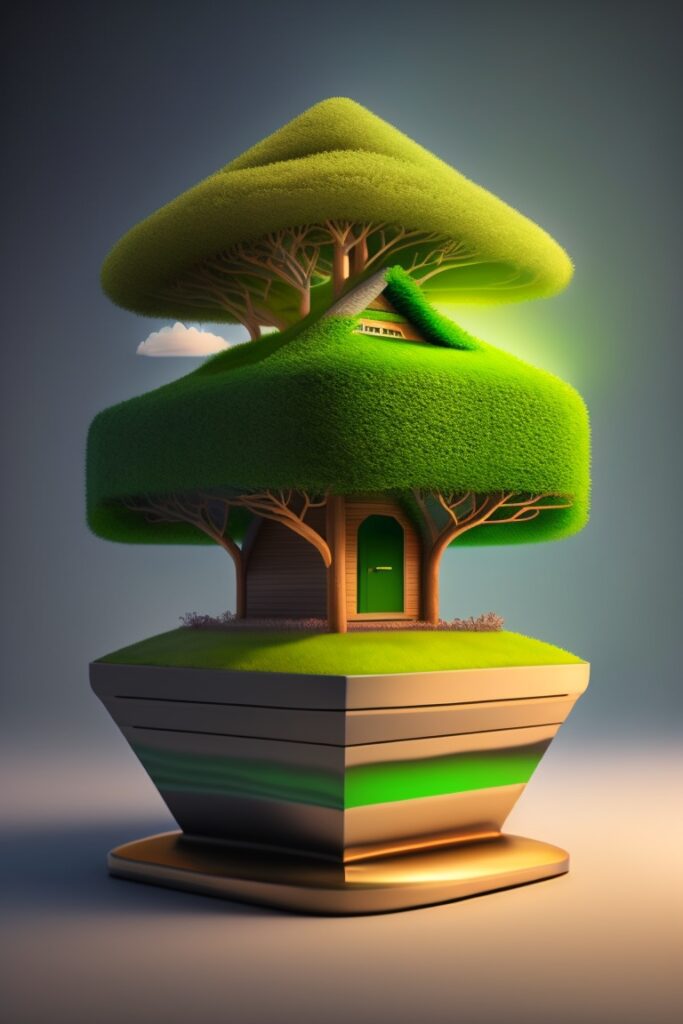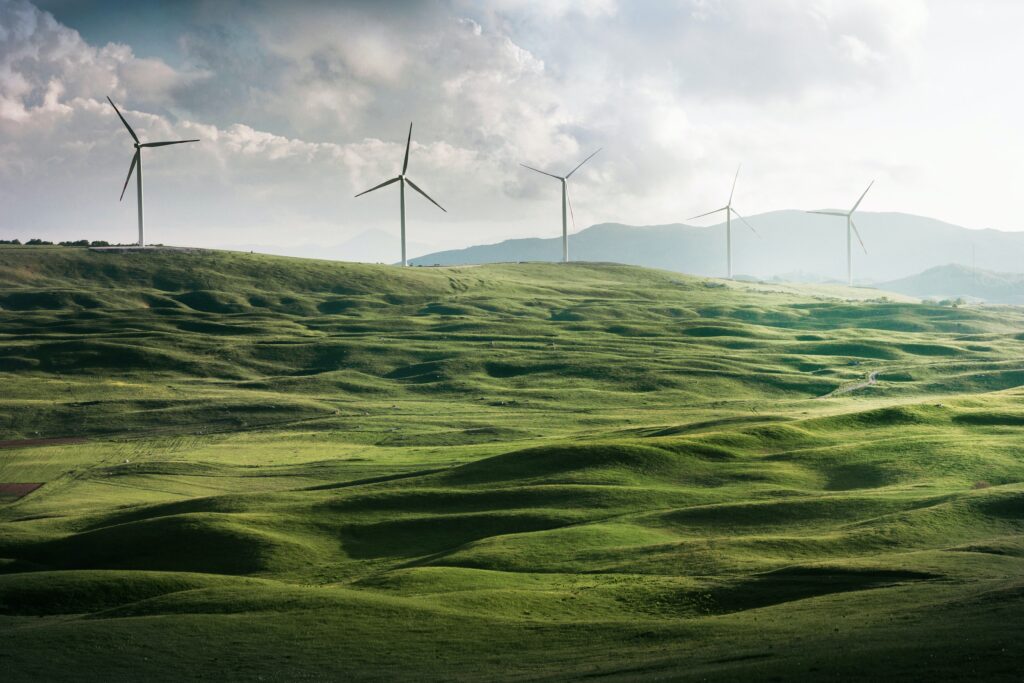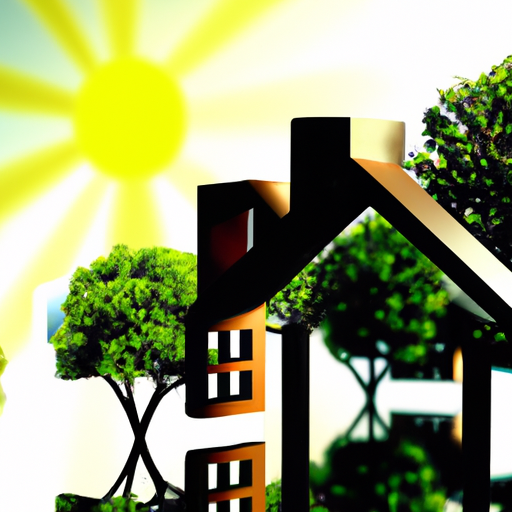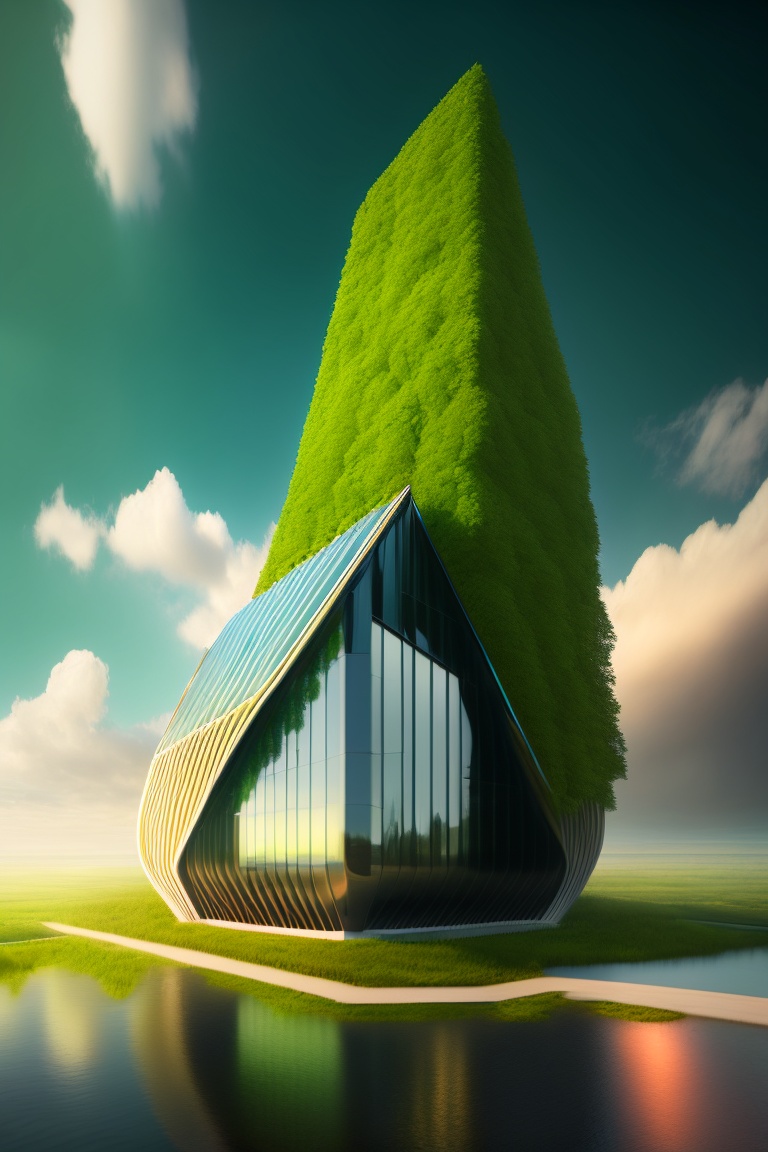Are you curious about the concept of green buildings? Well, look no further! This article will provide you with a comprehensive understanding and answer to the question, “What is a green building?” From its environmental benefits to the design principles it entails, you’ll gain valuable insights into this sustainable and eco-friendly approach to construction. So, get ready to explore the world of green buildings and discover how they contribute to a brighter future for our planet.
 </center\>
</center\>Definition of a Green Building
Introduction
A green building, also known as a sustainable building or eco-friendly building, is a structure that is designed and constructed using environmentally-responsible practices and materials. These buildings are designed to minimize the impact on the environment and enhance the health and well-being of its occupants. From residential buildings to commercial and industrial structures, green buildings are becoming more popular across the world.
Environmental Benefits
One of the key reasons for the rising popularity of green buildings is the environmental benefits they offer. Green buildings aim to reduce the overall environmental impact throughout their life cycle, from the construction phase to operation and maintenance. These buildings utilize sustainable materials, use energy efficiently, and minimize waste generation. By incorporating renewable energy sources like solar power and wind energy, green buildings significantly reduce carbon emissions and help combat climate change. Further environmental benefits include water conservation, improved indoor air quality, and reduced reliance on non-renewable resources.
Health Benefits
Green buildings have a significant impact on the health and well-being of their occupants. By incorporating natural ventilation systems, high-quality air filtration, and non-toxic materials, these buildings offer improved indoor air quality, reducing the risk of respiratory problems and allergic reactions. Additionally, green buildings often provide ample daylight and access to nature, which have been proven to enhance productivity and reduce stress levels. The use of environmentally-friendly cleaning products also contributes to the overall health benefits of green buildings.
Energy Efficiency
One of the key features of a green building is its focus on energy efficiency. These buildings are designed to minimize energy consumption through various strategies. The use of energy-efficient lighting fixtures, advanced insulation materials, and efficient heating, ventilation, and air conditioning (HVAC) systems results in significant energy savings. Additionally, green buildings often incorporate renewable energy sources such as solar panels or geothermal systems to generate clean energy on-site. By reducing energy demand and incorporating renewables, green buildings not only reduce greenhouse gas emissions but also lead to cost savings for the occupants.
Water Efficiency
Water scarcity is a growing concern globally, making water efficiency a crucial aspect of green buildings. Implementing water-efficient fixtures and fittings such as low-flow toilets, faucets, and showerheads reduces water consumption without compromising functionality. Rainwater harvesting systems, greywater recycling, and efficient irrigation systems are commonly incorporated into green buildings to reduce reliance on freshwater sources. By minimizing water consumption and maximizing water reuse, green buildings help conserve this valuable resource and reduce the strain on local water supplies.
Key Features of a Green Building
Sustainable Site Planning
Sustainable site planning is an essential aspect of green building design. It involves selecting a location that minimizes negative environmental impacts while maximizing benefits for occupants and the community. Considerations include site access, proximity to public transportation, minimizing disturbance to existing vegetation, and preserving natural features. By planning a building’s site sustainably, green buildings can minimize ecological disruption, promote biodiversity, reduce pollution, and improve walkability.
Water Efficiency
Water efficiency is a key feature of green buildings to address the growing concerns of water scarcity. Incorporating water-efficient fixtures, rainwater harvesting systems, and greywater recycling enables green buildings to minimize water consumption and reduce reliance on freshwater sources. Efficient irrigation systems also help optimize water usage by providing the right amount of water to landscapes and gardens. By implementing these water-saving strategies, green buildings contribute to sustainable water management practices.
Energy Efficiency
Energy efficiency is a fundamental aspect of green building design. Green buildings are designed to reduce energy consumption and increase energy performance by incorporating various strategies. These strategies include advanced insulation, high-performance windows, efficient lighting systems, and the use of energy-saving appliances and equipment. Additionally, green buildings often incorporate renewable energy sources such as solar panels or wind turbines to generate clean energy on-site. By focusing on energy efficiency, green buildings minimize the environmental impact associated with energy consumption.
Materials and Resource Management
Green buildings prioritize materials and resource management to minimize waste generation and use eco-friendly materials. This involves selecting materials with a low environmental impact, such as recycled content, rapidly renewable resources, and non-toxic materials. Green buildings also emphasize waste reduction and recycling during the construction and demolition phases. By implementing sustainable materials and resource management practices, green buildings minimize the extraction of raw materials, reduce landfill waste, and promote a circular economy.
Indoor Environmental Quality
Indoor environmental quality is a crucial aspect of green building design, aiming to provide a healthy and comfortable indoor environment for occupants. This involves promoting natural daylighting, proper ventilation systems to maintain high air quality, and using non-toxic building materials. Green buildings also prioritize acoustics, thermal comfort, and access to views and nature to enhance occupants’ well-being. By prioritizing indoor environmental quality, green buildings contribute to the health, productivity, and overall satisfaction of their occupants.
Innovation and Design Process
The innovation and design process is a key feature of green buildings that encourages and promotes creative and sustainable solutions. This involves incorporating innovative technologies, materials, and building techniques to enhance the performance and efficiency of green buildings. The design process focuses on holistic and integrated approaches that consider the building’s life cycle, environmental impact, and occupant well-being. By embracing innovation in the design process, green buildings push boundaries and pave the way for sustainable architecture and construction practices.
Certification Systems for Green Buildings
LEED (Leadership in Energy and Environmental Design)
LEED, developed by the United States Green Building Council (USGBC), is one of the most widely recognized certification systems for green buildings globally. It provides a framework for assessing the sustainability of a building’s design, construction, operation, and maintenance. LEED certification evaluates various aspects, including energy efficiency, water conservation, indoor environmental quality, materials selection, and innovation in design. By achieving LEED certification, green buildings demonstrate their commitment to sustainability and can reap the benefits of improved environmental performance and occupant well-being.
BREEAM (Building Research Establishment Environmental Assessment Method)
BREEAM, developed by Building Research Establishment (BRE) in the United Kingdom, is another renowned green building certification system. It assesses sustainability across various categories, including energy, water, materials, waste, pollution, and land use. BREEAM certification promotes a holistic approach to sustainable building design and encourages buildings to achieve high levels of environmental performance. By attaining BREEAM certification, green buildings demonstrate their commitment to sustainability and contribute to a greener built environment.
Green Star
Green Star is an Australian green building certification system developed by the Green Building Council of Australia (GBCA). It evaluates the environmental performance of buildings across nine categories, including energy, water, materials, emissions, and innovation. Green Star certification encourages the adoption of sustainable practices throughout a building’s life cycle, from design and construction to operation and maintenance. By obtaining Green Star certification, green buildings showcase their commitment to sustainability and contribute to Australia’s goal of a sustainable built environment.
Living Building Challenge
The Living Building Challenge is an international certification program that goes beyond traditional green building standards. It aims to create buildings that strive for regenerative design and function as self-sufficient, sustainable ecosystems. Living Building Challenge certification evaluates various aspects, including net-zero energy and water, carbon neutrality, social equity, and biophilic design principles. By achieving Living Building Challenge certification, green buildings demonstrate the highest level of sustainability and pave the way for transformative change in the built environment.
Types of Green Buildings
Residential Buildings
Green building practices are increasingly being implemented in residential buildings to reduce energy consumption, provide healthier indoor environments, and minimize environmental impact. These can range from single-family homes to multi-unit housing complexes. Green residential buildings incorporate energy-efficient appliances, sustainable materials, and renewable energy systems to achieve high levels of energy performance. Furthermore, they often prioritize water efficiency, indoor air quality, and integration with the surrounding natural environment.
Commercial Buildings
Commercial buildings, such as offices, retail spaces, and hotels, are significant contributors to energy consumption and environmental impact. Green building practices in commercial buildings focus on energy efficiency, water conservation, and sustainable materials. They incorporate innovative technologies and design strategies to reduce energy and water consumption, improve indoor air quality, and enhance the overall occupant experience. Green commercial buildings also prioritize the use of natural daylight, sustainable transportation options, and waste management systems.
Industrial Buildings
Industrial buildings, including warehouses, factories, and manufacturing facilities, have unique sustainability challenges due to their energy-intensive operations. Green building practices in industrial buildings focus on optimizing energy efficiency, reducing resource consumption, and minimizing waste generation. This involves implementing energy management systems, utilizing efficient equipment and machinery, and adopting sustainable materials. Green industrial buildings often incorporate renewable energy sources and advanced waste management systems to minimize their environmental impact.
Educational Buildings
Educational buildings, such as schools, colleges, and universities, play a significant role in nurturing future generations. Green building practices in educational buildings aim to provide healthy and inspiring learning environments. These buildings prioritize energy efficiency, sustainable materials, and indoor environmental quality. They often incorporate features such as natural daylighting, efficient HVAC systems, and eco-friendly classroom furniture. Green educational buildings also serve as valuable teaching tools by showcasing sustainable practices and inspiring students to engage in environmentally responsible behavior.
Healthcare Buildings
Healthcare buildings, including hospitals, clinics, and research facilities, have unique requirements for maintaining high standards of patient care while minimizing their environmental impact. Green building practices in healthcare facilities focus on energy efficiency, indoor air quality, and infection control. These buildings incorporate energy-saving technologies, efficient lighting, and ventilation systems to minimize energy consumption. Green healthcare buildings also prioritize water conservation, waste management systems, and the use of sustainable materials to create healing environments that promote patient well-being.

Challenges in Implementing Green Buildings
Cost
One of the significant challenges in implementing green buildings is the perception of higher upfront costs compared to conventional buildings. Green building technology, materials, and systems often come at a premium price, leading to concerns about financial feasibility, especially for smaller projects or budgets. However, studies have shown that while initial construction costs may be slightly higher, the long-term operational savings of green buildings often outweigh the initial investment. Additionally, the rising demand for green buildings has led to market competitiveness, making green building products and services more affordable over time.
Lack of Awareness
Another challenge in implementing green buildings is the lack of awareness and understanding of their benefits among stakeholders, including developers, investors, and the general public. Many individuals and organizations are still unaware of the environmental and health benefits associated with green buildings. Educating stakeholders about the advantages of green building practices, including energy savings, improved indoor air quality, and reduced environmental impact, is crucial for widespread adoption. Increasing awareness through educational campaigns, industry conferences, and government initiatives can help overcome this challenge.
Resistance to Change
Resistance to change is a common challenge faced when implementing green buildings. Traditional construction methods and materials are deeply rooted in the industry, and transitioning to sustainable practices may face resistance from professionals and workers who are resistant to change. Overcoming this challenge requires demonstrating the benefits of green buildings and addressing concerns regarding additional training requirements, perceived risks, and unfamiliar construction techniques. Providing training and education on green building practices, as well as showcasing successful green building projects, can help overcome resistance to change.
Limited Availability of Green Materials
The limited availability and higher costs of green building materials can pose challenges in the construction of green buildings. While sustainable building materials are becoming more prevalent, they may not be as readily available as conventional materials in some regions. This limited availability can lead to higher costs, longer procurement times, and logistical challenges. Government support and incentives, as well as increased demand for green materials, can help stimulate the market and encourage the production and availability of sustainable building materials.
Technical Complexity
The implementation of green buildings often involves technical complexity due to the integration of various systems and technologies. Incorporating energy-efficient systems, renewable energy sources, and water conservation measures requires specialized knowledge and expertise. Architects, engineers, and contractors need to possess the necessary skills and training to design and construct green buildings effectively. Overcoming technical complexity requires collaboration among professionals from various disciplines and continuous education and training to stay updated with the latest green building technologies and practices.
Benefits of Green Buildings
Environmental Benefits
Green buildings offer a wide range of environmental benefits. By reducing energy consumption, utilizing renewable energy sources, and minimizing carbon emissions, green buildings contribute to mitigating climate change and reducing air pollution. The use of water-efficient fixtures and systems reduces water consumption and preserves freshwater resources. Green buildings also promote sustainable waste management practices, such as recycling and waste reduction, minimizing the burden on landfills.
Health and Well-being Benefits
Green buildings have a positive impact on the health and well-being of their occupants. By using non-toxic materials, implementing proper ventilation systems, and prioritizing natural daylighting, green buildings provide a healthier indoor environment. Improved indoor air quality reduces the risk of respiratory diseases and allergies. Access to daylight and nature enhances productivity and mental well-being. Green buildings also prioritize thermal comfort and acoustic performance, creating more comfortable and enjoyable spaces.
Economic Benefits
Green buildings offer economic benefits to various stakeholders. For building owners and operators, green buildings often result in reduced operating costs due to lower energy and water consumption. The implementation of energy-efficient systems can lead to significant cost savings in the long run. Additionally, green buildings are associated with higher property values and rental premiums. Occupants of green buildings also benefit from lower utility bills and increased productivity, resulting in improved cost-effectiveness and return on investment.

Case Studies of Green Building Projects
Pearl River Tower, China
The Pearl River Tower in Guangzhou, China, is a renowned example of a green building project. It is a 71-story office building that incorporates innovative green design features. The tower’s shape is optimized for natural ventilation, reducing the need for mechanical cooling systems. It features photovoltaic panels integrated into its facade and wind turbines at strategic locations to generate clean energy. The Pearl River Tower also utilizes a rainwater harvesting system and efficient water fixtures to minimize water consumption. Its sustainable design has earned LEED Platinum certification.
One Central Park, Australia
One Central Park in Sydney, Australia, is a mixed-use development that exemplifies sustainable design and green building principles. The project includes residential and commercial buildings surrounded by extensive green spaces. Vertical gardens cover the facades of the towers, providing insulation, improving air quality, and enhancing the aesthetics. The development utilizes solar panels, trigeneration systems, and natural ventilation to reduce energy consumption and emissions. One Central Park has received numerous awards for its sustainable design, including a 6-star Green Star rating.
The Edge, Netherlands
The Edge, located in Amsterdam, Netherlands, is recognized as one of the world’s most sustainable office buildings. It utilizes advanced technologies and innovative design strategies to achieve exceptional energy efficiency. The building incorporates solar panels, rainwater harvesting systems, and smart sensors that optimize energy, lighting, and heating based on occupancy and environmental conditions. The Edge is considered a smart building, using IoT (Internet of Things) technology to create a more efficient and comfortable work environment. It has achieved the highest BREEAM rating of “Outstanding.”
Khoo Teck Puat Hospital, Singapore
Khoo Teck Puat Hospital in Singapore is a pioneering example of a green healthcare facility. The hospital incorporates sustainable design features aimed at reducing energy consumption and enhancing the well-being of patients and staff. Natural ventilation, extensive green spaces, and healing gardens provide a healing environment that promotes patient recovery. The hospital utilizes energy-efficient lighting, rainwater harvesting systems, and solar panels to reduce its environmental impact. Khoo Teck Puat Hospital has achieved various certifications, including the Green Mark Platinum rating.
Bullitt Center, USA
The Bullitt Center in Seattle, USA, is a six-story office building that showcases the possibilities of sustainable design and construction. It is designed to be a net-zero energy and net-zero water building, generating as much energy and collecting as much water as it consumes. The Bullitt Center incorporates extensive solar panels, high-performance insulation, and rainwater harvesting systems. It also features composting toilets and radiant heating and cooling systems. The building’s green design has achieved Living Building Challenge certification, demonstrating its commitment to regenerative design.
Government Policies and Incentives for Green Buildings
Energy Efficiency Tax Credits
Many governments incentivize green building practices through energy efficiency tax credits. These tax credits encourage building owners and developers to invest in energy-efficient systems, renewable energy technologies, and sustainable building materials. By offering tax credits, governments aim to reduce energy consumption, promote green building technologies and practices, and stimulate the economy. These tax credits can significantly offset the costs of implementing green building measures, making sustainable design and construction more financially feasible.
Green Building Codes and Standards
Governments worldwide are implementing green building codes and standards to regulate and incentivize sustainable construction practices. These codes and standards establish minimum requirements for energy efficiency, water conservation, indoor air quality, and materials selection. Compliance with these codes and standards is often mandatory for new construction and major renovations. By setting guidelines and performance targets, governments promote the adoption of green building practices and encourage the construction industry to prioritize sustainability.
Grants and Funding Programs
Many governments offer grants and funding programs to support green building initiatives. These grants and funding programs provide financial assistance to building owners, developers, and communities to implement green building practices. They aim to accelerate the adoption of sustainable design and construction by reducing the financial barriers associated with green building projects. Grants and funding programs may cover expenses related to energy-efficient technologies, renewable energy systems, water conservation measures, and sustainability certifications.
Tax Incentives
Tax incentives are an effective tool used by governments to promote green building practices. Governments may offer tax breaks or reductions for building owners who invest in energy-efficient systems, renewable energy technologies, or sustainable building materials. These incentives aim to reduce the financial burden of implementing green building measures and encourage building owners to adopt sustainability practices. By providing tax incentives, governments can drive change, reduce the environmental impact of the built environment, and create more energy-efficient buildings.
Public Procurement Policies
Governments can influence the market for green buildings through public procurement policies. These policies require government agencies to prioritize the procurement of green buildings and sustainable products and services. By setting sustainable procurement standards, governments create a demand for green building practices and products, stimulating the industry and encouraging suppliers to adopt sustainable practices. Public procurement policies also serve as examples and showcases for the private sector, demonstrating the feasibility and benefits of green buildings.

Future Trends in Green Building
Net Zero Energy Buildings
Net zero energy buildings are an emerging trend in green building design. These buildings are designed to produce as much energy as they consume on an annual basis. They achieve this through a combination of energy efficiency measures and on-site renewable energy generation. Net zero energy buildings utilize advanced insulation, high-performance windows, energy-efficient appliances, and renewable energy systems such as solar panels or wind turbines. As the focus on sustainability and carbon neutrality intensifies, net zero energy buildings are expected to become more prevalent in the future.
Smart Buildings
Smart buildings are another future trend in green building design. These buildings utilize advanced technologies and connectivity to optimize energy usage, improve occupant comfort, and enhance building management and operations. Smart building systems can monitor and adjust lighting, temperature, ventilation, and other parameters based on occupancy and environmental conditions. They can also provide real-time energy data for efficient energy management and maintenance. By using IoT (Internet of Things) technology, artificial intelligence, and data analytics, smart buildings can improve energy efficiency and occupant satisfaction.
Biophilic Design
Biophilic design is an emerging trend that emphasizes the connection between humans and nature in built environments. It incorporates natural elements, materials, and patterns into the design of buildings to create more productive and stress-free spaces. Biophilic design includes features such as indoor green walls, natural light, views of nature, and natural ventilation. These elements have been shown to improve mental well-being, cognitive function, and productivity. As awareness of the benefits of biophilic design grows, more buildings are expected to incorporate nature-inspired elements in their design.
Circular Economy Strategies
Circular economy strategies focus on reducing waste and promoting resource efficiency throughout a building’s life cycle. Rather than the traditional linear “take-make-dispose” model, circular economy strategies aim to keep materials and resources in use for as long as possible. This involves designing buildings for disassembly and reuse, promoting the use of recycled and upcycled materials, and implementing effective waste management systems. Circular economy principles are gaining traction in the construction industry, and future green buildings are likely to embrace these strategies to minimize their environmental impact.
Climate Resilient Buildings
As climate change continues to pose challenges, climate resilient buildings are becoming a priority. These buildings are designed and constructed to withstand the impacts of climate change, including extreme weather events, temperature fluctuations, and sea-level rise. Climate resilient buildings incorporate features such as strong and durable materials, flood-resistant design, and efficient rainwater management systems. They are built to adapt to changing climate conditions and to continue functioning effectively and safely. Climate resilient buildings ensure long-term sustainability and minimize the risks associated with climate change.
Conclusion
Green buildings offer numerous environmental, health, and economic benefits. By incorporating sustainable design and construction practices, green buildings minimize their environmental impact, enhance occupant well-being, and contribute to a more sustainable future. Through features such as energy efficiency, water conservation, and the use of eco-friendly materials, green buildings reduce greenhouse gas emissions, conserve resources, and promote a healthier indoor environment. Governments, certification systems, and incentives play a crucial role in driving the adoption of green building practices and incentivizing sustainable construction. As the demand for sustainable buildings continues to grow, green building trends are expected to focus on net zero energy buildings, smart buildings, biophilic design, circular economy strategies, and climate resilience. With increased awareness and support, green buildings have the potential to transform the built environment and pave the way for a more sustainable and resilient future.




